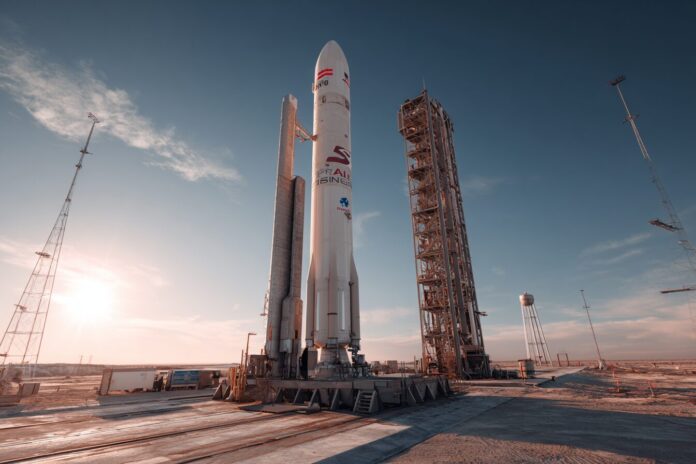Firefly Aerospace: A New Star Rises on Wall Street
Firefly Aerospace made headlines in August 2025 with its landmark IPO, establishing itself as a pivotal force in today’s space industry. Listed under the ticker symbol FLY on the Nasdaq and priced at $45 per share, the company successfully raised $868 million. This remarkable achievement has ignited investor enthusiasm and redefined expectations for commercial space enterprises.
Most importantly, the underwriting process and market response demonstrated renewed investor confidence in aerospace ventures, because the oversubscribed IPO is a testament to robust market demand. In addition, numerous financial analysts have cited this IPO as a major milestone that paves the way for more ambitious public offerings in the space sector. For more detailed insights, refer to Firefly Aerospace News and Economic Times.
From Near Collapse to Lunar Triumph
Firefly Aerospace’s story is one of dramatic resurgence and inspiring turnaround. Originally founded in 2014 as Firefly Space Systems, the company faced significant hurdles including bankruptcy and restructuring in 2016. However, because of determined leadership and a clear vision for the future, Firefly quickly realigned its strategy to focus on innovation and operational excellence.
Therefore, the company embraced new objectives that would eventually lead to historic achievements. In March 2025, Firefly’s Blue Ghost lunar lander successfully landed on the moon—a feat that places it among only a handful of private entities with such an accomplishment. Besides that, this milestone has reinvigorated the space sector by showcasing how innovation can defy past setbacks, as detailed in Forecast International.
Pioneering Technology: Alpha and Eclipse Rockets
Firefly Aerospace’s portfolio is anchored by ambitious projects that promise to set new industry standards. The Alpha rocket is a small-lift vehicle designed to provide cost-effective satellite launches to low Earth orbit (LEO). Using advanced carbon composite structures, Alpha is built for enhanced payload capacity and reliability.
Moreover, the upcoming Eclipse rocket is designed to propel medium-lift missions and is scheduled for its debut in 2026. Partnering with industry leaders such as Northrop Grumman has allowed Firefly to develop a two-stage, partially reusable launcher capable of delivering over 16,000 kg to LEO. Because of these innovative projects, Firefly is positioned to challenge renowned competitors like SpaceX and Rocket Lab. Additional technical details can be found in the reports on SwingTradeBot and Economic Times.
Strategic Partnerships and Government Backing
Strategic partnerships have been pivotal in Firefly’s accelerated growth. The company has forged essential alliances with prominent names like NASA, the U.S. Space Force, Northrop Grumman, and Lockheed Martin. These collaborations have not only provided technological expertise but also opened access to significant government contracts.
Because of a recent policy shift by the U.S. administration aimed at broadening the pool of space contractors, investor interest in the firm has surged. Most importantly, this environmental shift led to a strategically oversubscribed IPO, as the government seeks to support diversified contractors in evolving defense and lunar initiatives. For a deeper review of these developments, readers are encouraged to visit Observer.
Financial Strategies and Market Reception
The enthusiastic reception from investors exemplifies Firefly’s strong financial positioning. With an upsized offering and shares sold above the initial range, Firefly closed its first day of trading with a notable premium. This robust market performance underscores the financial community’s endorsement of the company’s future prospects.
Furthermore, because the IPO proceeds will be strategically allocated to repay outstanding debts, cover accrued dividends, and boost research and development, Firefly is set to reinforce its competitive edge. Besides that, a 27% increase in R&D spending, reaching nearly $150 million, reflects the company’s commitment to improving both its Alpha and Eclipse platforms and developing next-generation space systems. For further context, see the detailed analysis on Forecast International.
Meet the Visionaries: Key Leaders at Firefly Aerospace
Firefly Aerospace’s impressive revival is closely tied to its exceptional leadership team. Jason Kim, CEO, a skilled electrical engineer from Millennium Space Systems, has been instrumental in steering the company toward operational greatness. His leadership during the IPO process helped shape Firefly’s public image and foster operational credibility.
In addition, the company’s founders and early backers, including industry pioneer Tom Markusic, have integrated seasoned aerospace veterans into the management team. Because of this blend of private and government expertise, Firefly’s board and advisory group offer a diverse perspective, ensuring innovative strategies and robust governance. These leadership insights are further explored in articles available at Observer.
What’s Next: Outlook for Firefly Aerospace
Looking forward, the strategic roadmap for Firefly Aerospace is both ambitious and pragmatic. The company aims to increase its launch cadence, debut the Eclipse rocket on schedule, and expand its involvement in lunar and defense projects. Most importantly, these initiatives are expected to propel the company further into the forefront of commercial space exploration.
Because global demand for space access continues to rise, Firefly is poised to become a central player in an increasingly competitive field. Therefore, industry analysts believe that Firefly’s next phase involves not only technological advancements but also broader market penetration. For additional insights into the future trajectory of Firefly, readers should explore articles at Firefly Aerospace News and SwingTradeBot.



